ARC CCeMMP Bench to Art Exhibition 2024 Winners!
This year marked our first year hosting the ARC CCeMMP Bench to Art Exhibition enabling us to display the beautiful entries created by the scientific community from around the world. We exhibited 28 brilliant entries during Australia’s National Science Week where the aim was to share stories of exploration and discovery in structural biology with the broader community. As part of the exhibition, we offered two prizes: First Prize Award and the People’s Choice Award. We are proud to announce the 2024 winners of both categories.
First Prize Award
First Prize was awarded by a judging panel composed of creatives in the scientific field and artists. Images were evaluated based on their aesthetic appeal, not on the data they depict.
We want to thank and acknowledge the efforts of all of the contributors and want to highlight that the judges found it difficult to choose one winner, the points were very close.
We also thank our judges for their expertise and time that they spent on judging the 28 entries. The judges and their profiles are below.
Many congratulations to the winners of the First Prize Award! Well deserved!
Aquaporin: The portal of life
Mohammad Turhan Pathan
Winner of the First Prize Award
Judges comments: “Nice play on composition themes here; the channel sitting in a water bath with streams of water entering. Nice lighting and reflections”; “The streams of water really draw the eye into the centre and the aquaporin. Ambience and composition are top notch.”
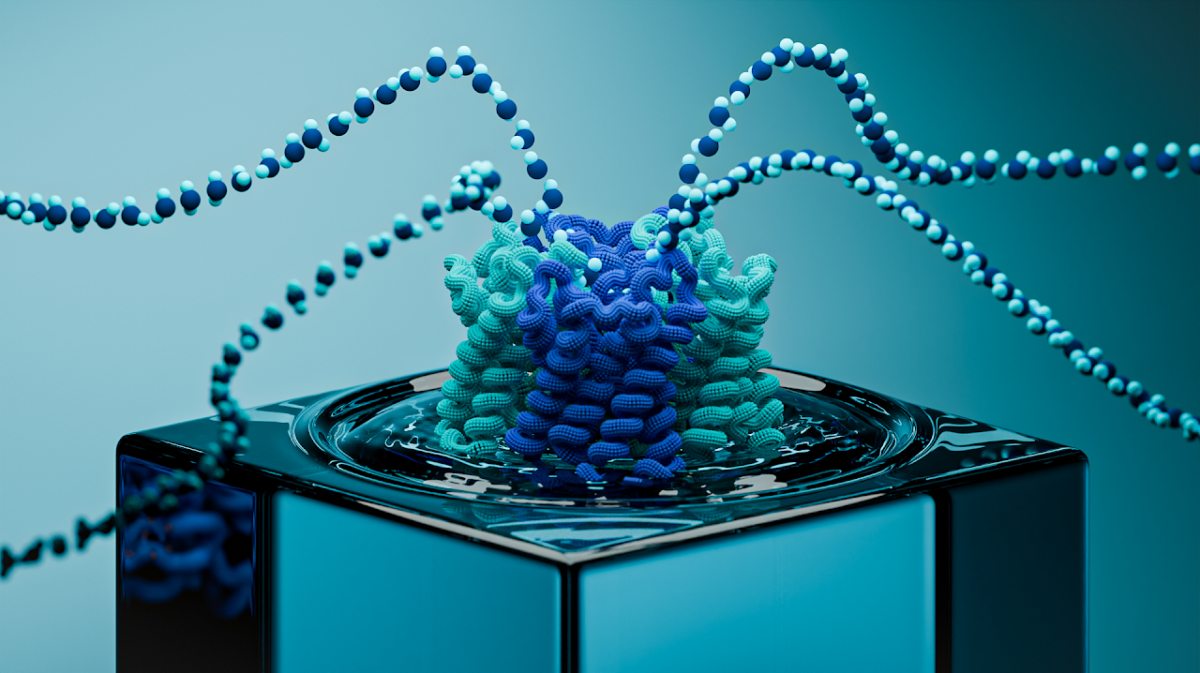
Aquaporins are channel proteins which facilitate the movement of water across cell membranes. From the smallest microorganism to the largest mammals, every life form depends on water for proper functioning at the molecular level, thus making Aquaporin the seasoned conductor of the beautiful interconnected tapestry named life.
Reference: https://doi.org/10.1371/JOURNAL.PBIO.1000130
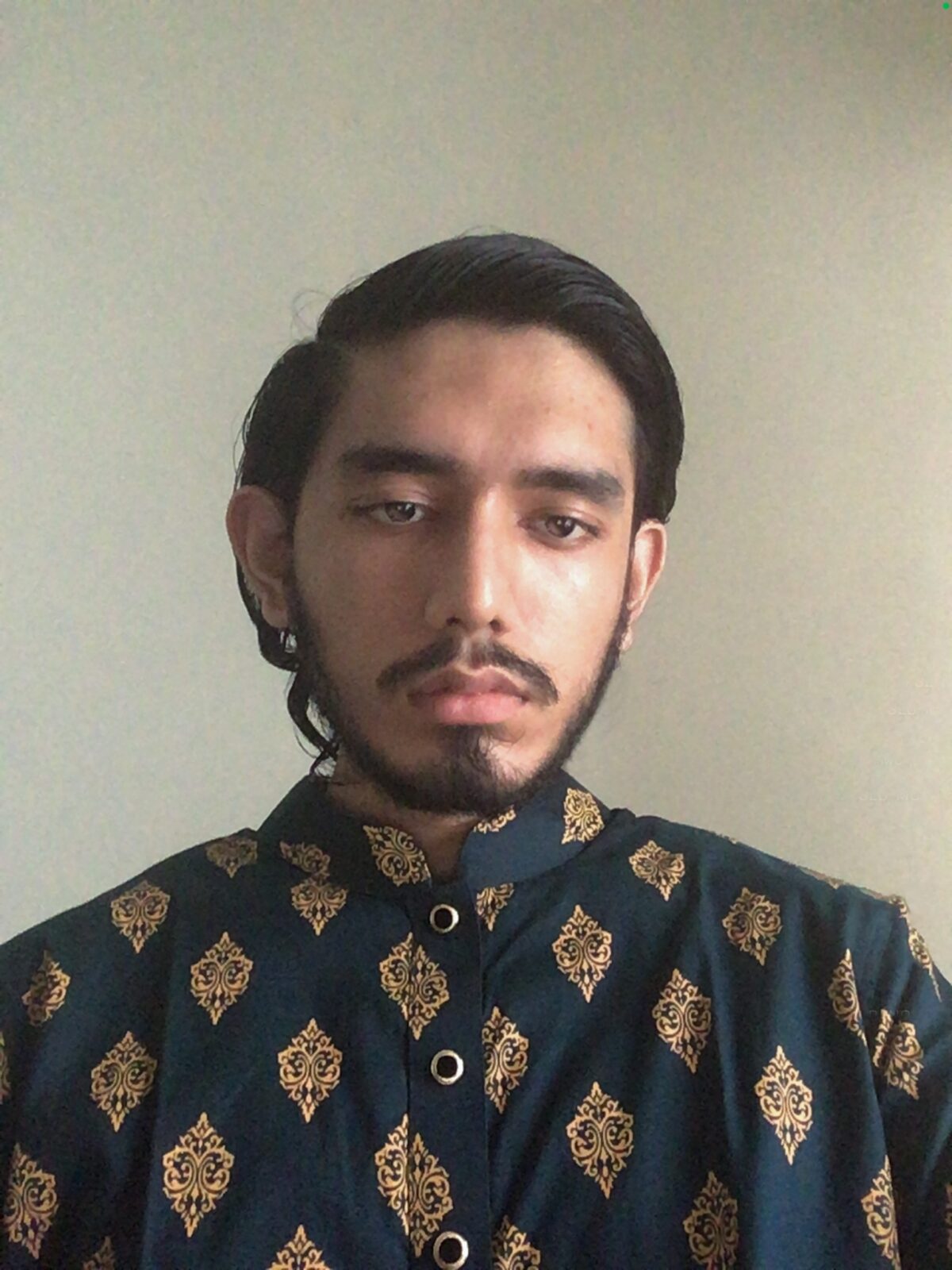
Mohammad Turhan Pathan
I am currently working full time as Freelance scientific illustrator and 3D concept artist.
I come from a country which has a subpar biology curriculum, which ultimately results in a bland and boring textbook. My inspiration lies in the fact that I want to change how biology is perceived and show the world how beautiful it is. As for how I got started with Scientific visualization, my mentor and close friend Gabriel Aeschilmann showed me the basics of Blender. The rest I learned from Youtube, namely Brady Johnston, CGFigures, Luminous labs.
“Lego Enzymes” edition: The AAA-ATPase Drg1 Remodels the Precursor of the Large Ribosomal Subunit
Michael Prattes
Equal second place winner
Judges comments: “Really clever interpretation of molecular structure as a toy. Great use of digital techniques to aid interpretation. Humorous side commentary made me laugh out loud. ” ; “I enjoyed this, it’s playful and fun.”
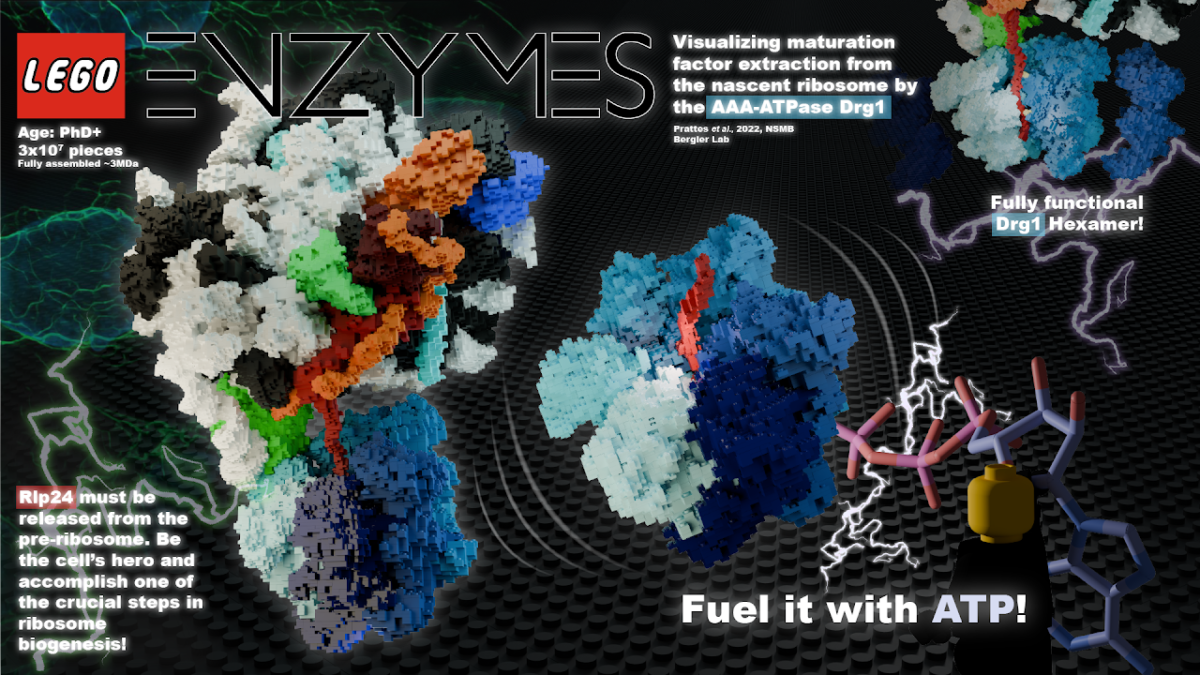
By playing with molecular building blocks for billions of years, nature’s playfulness and creativity has culminated in the the most beautifully designed molecular machines: enzymes. This artwork aims to honour this act of playful creation and make the heart of every scientist’s inner child beating faster. Who wouldn’t love to play with one’s favourite enzymes? The rendering is based on one of our published cryo-EM structures of the AAA-ATPase Drg1, assembled at its native substrate, the precursor of the large ribosomal subunit, also called pre-60S particle (Prattes et al., 2022, NSMB, PDB 7Z34).
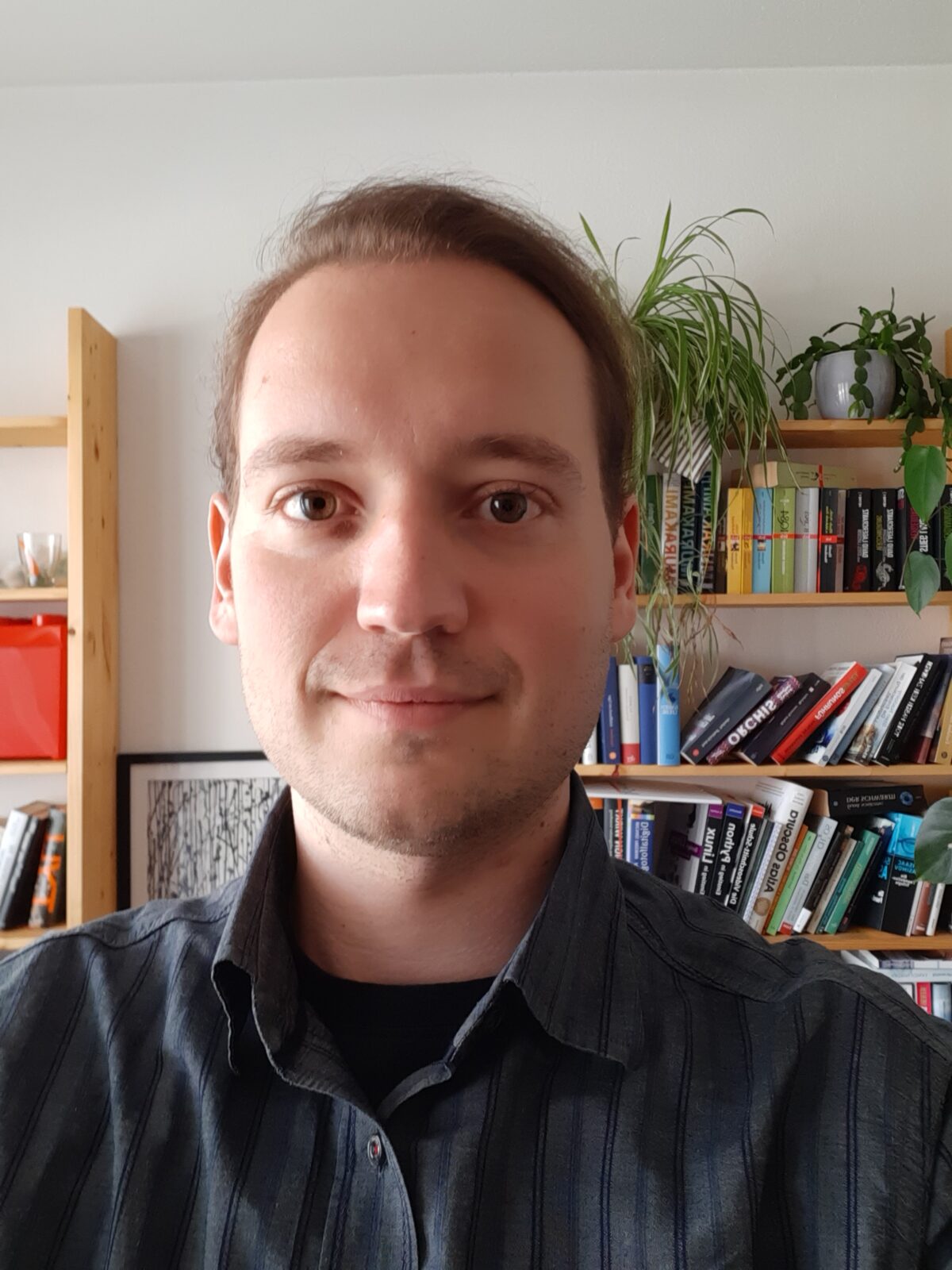
Michael Prattes
I found my passion for science visualisation while researching ribosome biogenesis using cryo-EM which allowed me to actually see the protein I was working with for many years. With my often playful artworks, I aim to visualise scientific contents in a way that not only conveys information but tells a story that hopefully resonates with the viewers.
‘Iron-bound’
Jesse Mobbs
Equal second place winner
Judges comments: “Love the iron foundry interpretation- great textures, glows and DOF” ; “really gives the feeling of the protein being a component in a metal foundry”
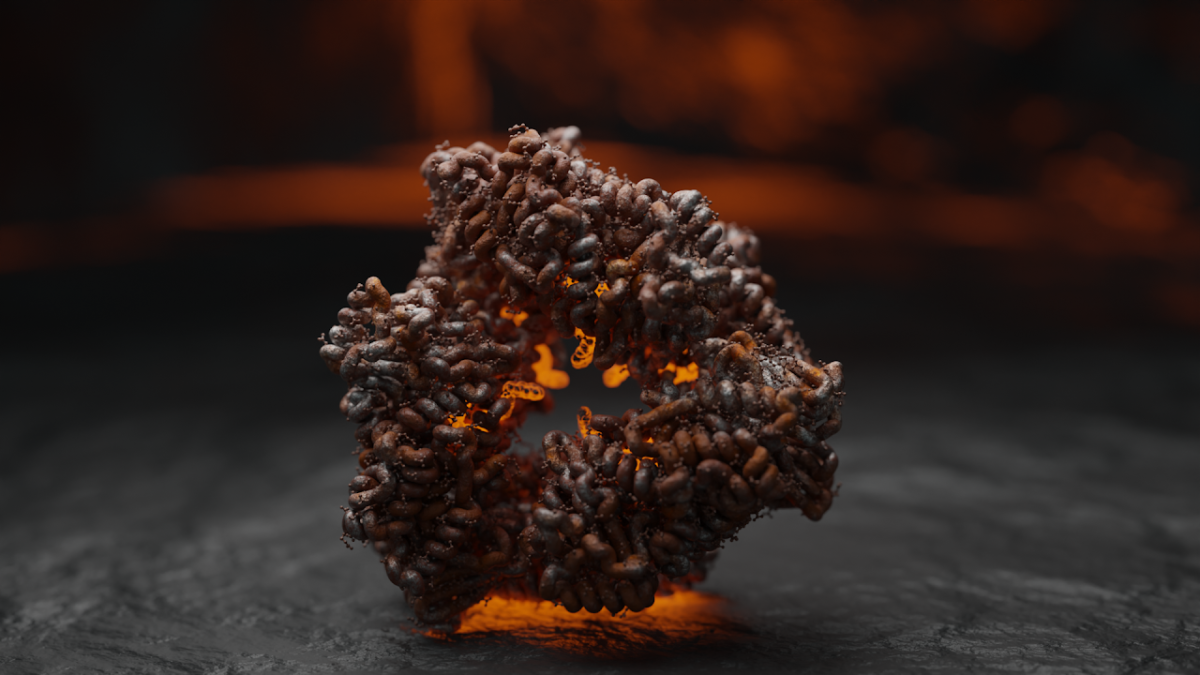
Human 12-lipoxygenase (12-LOX) is an iron-containing enzyme involved in platelet activation. Here I show the hexameric form of 12-LOX bound to the inhibitor ML355 (PDB ID = 8GHD, EMDB=40041). The protein is shown as rusted iron-textured ribbons and the ligands as glowing molten spheres.

Jesse Mobbs
I am a postdoctoral research fellow in the Analytical and Structural Neuropharmacology (ASNP) lab at Monash Institute of Pharmaceutical Sciences (MIPS). My current research focuses on the molecular characterisation of clinically relevant membrane proteins with a particular focus on G protein-coupled receptors. In creating this piece, I attempted to portray some of the function of the protein in the artwork. I believe science visualisation is a fantastic way to share our research to broader audience.
People’s Choice Award
People’s Choice was awarded based on the voters’ choice. The community were encouraged to vote for their favourite artwork during the exhibition. Voting closed at 5pm AEST on the 27th of August, 2024, with exactly 500 votes tallied.
We thank the community for their support and enthusiasm during the exhibition. We congratulate all the winners, well deserved!
Tanatic Delirium
Juan Valenzuela
Winner of the People’s Choice Award
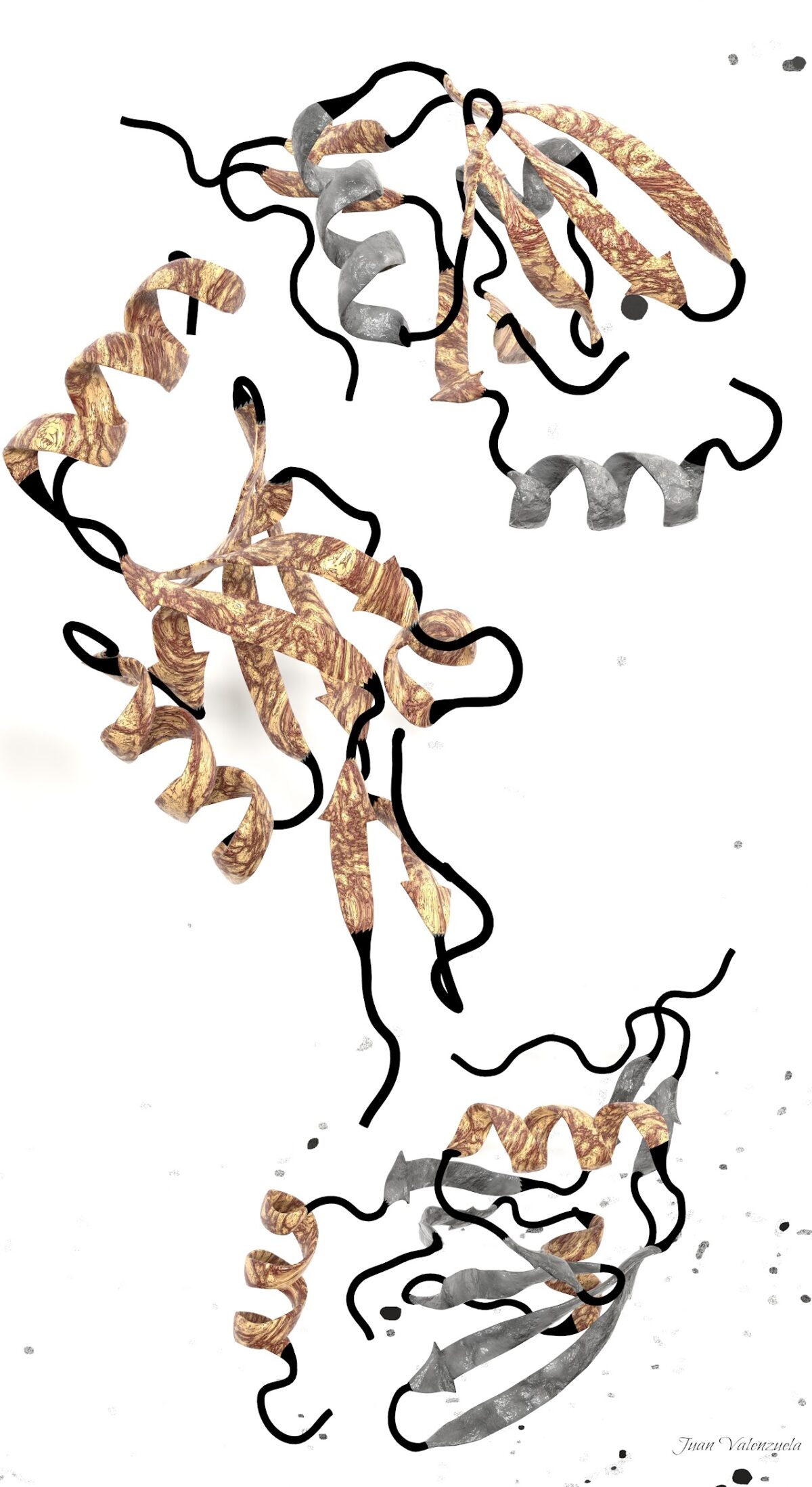
I show a protein (in three different positions) called “Serine Protease”, which cuts other structures into smaller pieces. Serine protease is related to premature senescence, considered one of the main evolutionary theories of aging. We notice that someone is aging because of the density of their skin. It must be deplorable when we witness the last moments of a loved one. In this artwork, I show a texture that reflects the pain (red veins) of someone who is in an eternal duel between life and death, suffering from their illness. It is said that said individual separates body and soul when he is no longer with us, something that no longer feels anything as if it were a stone (rough gray texture). PDB – 8JHZ
Crochet Motors Drive Bacterial Swimming
Daniel Fox
Second place, People’s Choice Award
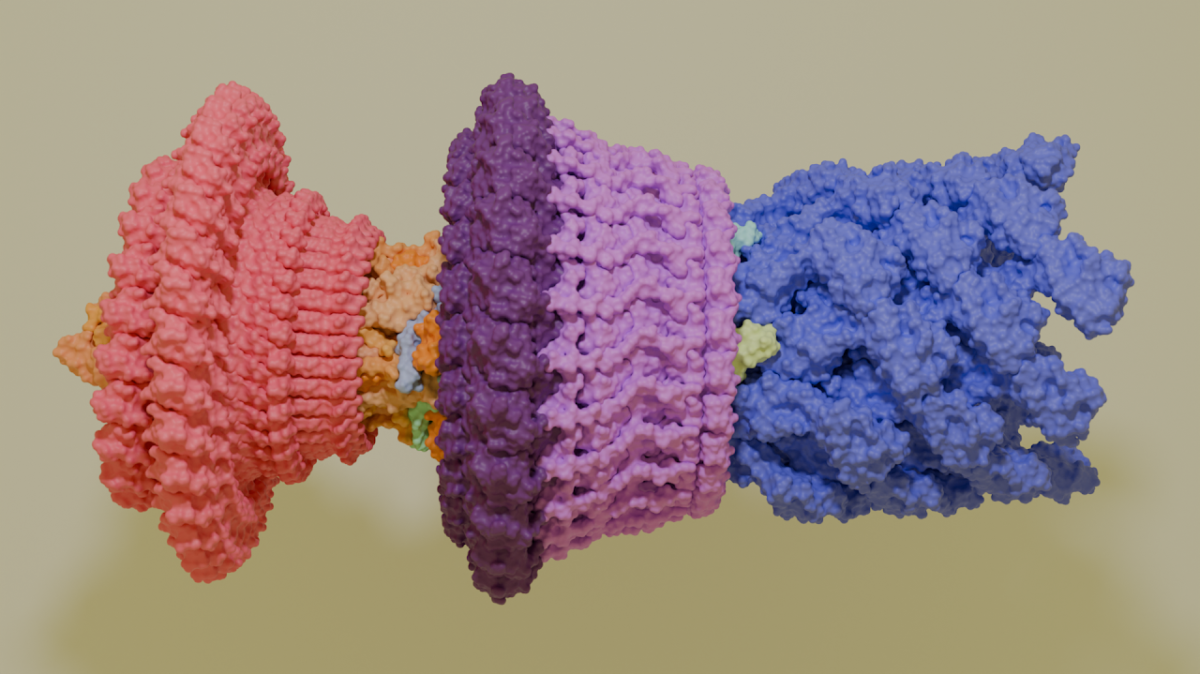
Depicted is the cryoEM structure of the Salmonella enterica Typhimurium flagellar motor-hook complex, as determined and described by Tan, Zhang, Wang, Xu, et al.; in “Structural basis of assembly and torque transmission of the bacterial flagellar motor”, Cell (2021). The bacterial flagella is a supramolecular machine which is used to facilitate movement of bacterial cells. At the base of the flagella is the flagellar motor complex, which has components that rotate rapidly to facilitate the transmission of torque through to the joint region to the helical propellar, to propel the bacterial cell in a certain direction. PDB ID: 7CGO.
Knot Bound
Laura Humphrys
Third place, People’s Choice Award
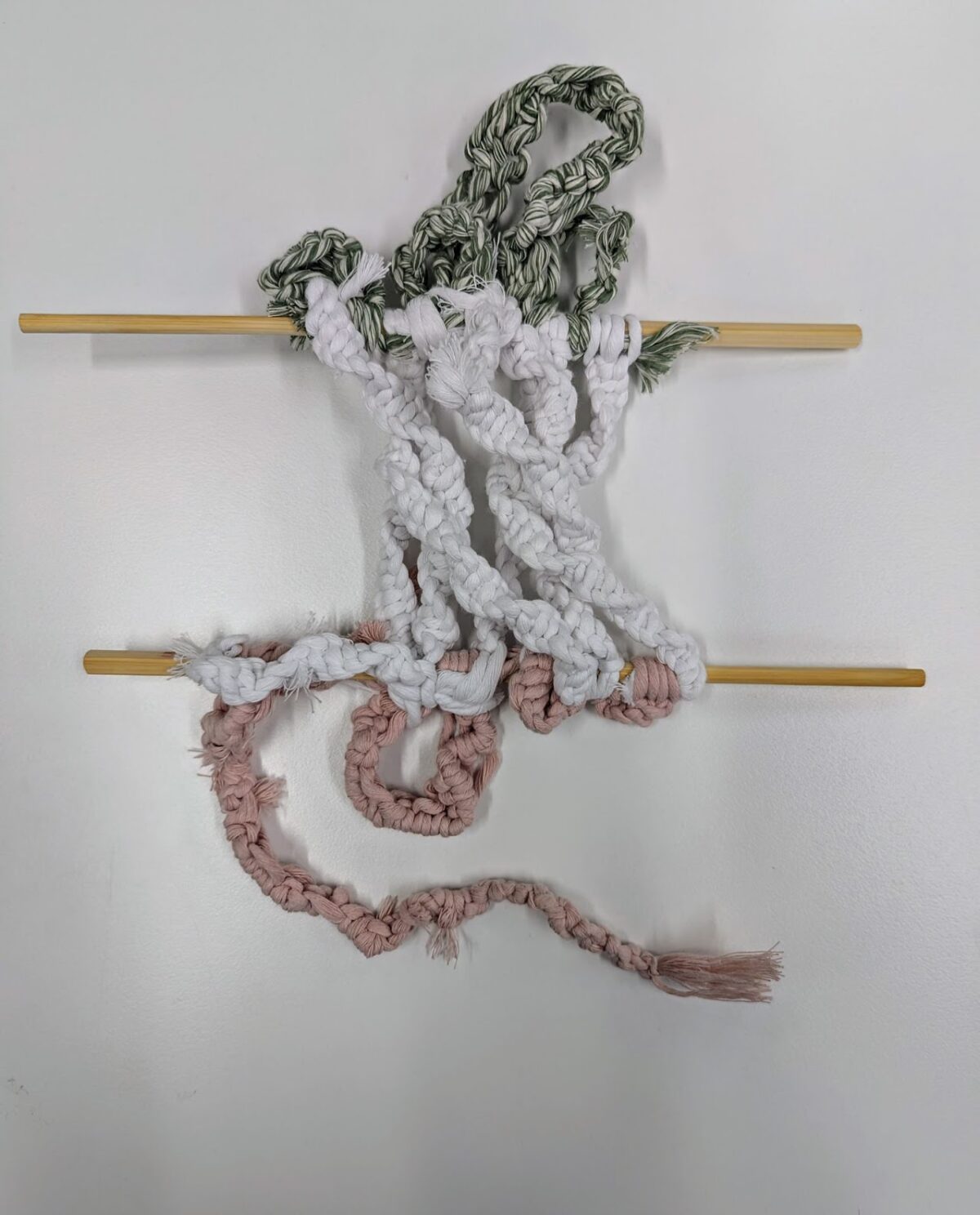
A G protein coupled receptor in faux 2D – the protein wanting to jump out of the flat confinement we often portray it with. Each knot in the string represents an amino acid giving life to the protein. Extracellular proteins in green hint at the nature of communication, whereas intracellular proteins are pink, characterising corpus. Recycled chopsticks convey the cyclical nature of membrane proteins in the membrane trafficking. Photograph.
About the Judges
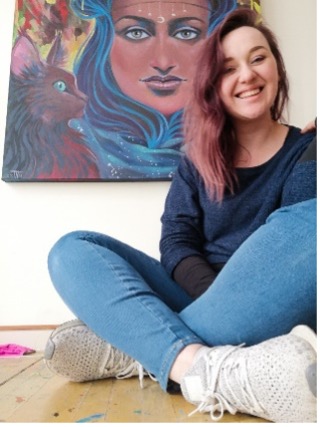
Tamara Tegethoff
Tamara Tegethoff is a freelance artist, illustrator, author and art teacher (since 2012) whose main focus are portraits and semi realistic whimsical visual worlds. She works digitally as well as with traditional medium such as watercolor, acrylic and oil.
Website: TamaraImAtelier.com
Instagram: @TamaraTegethoff

Brady Johnston
Brady Johnston is a structural biologist and creator of Molecular Nodes, for cutting-edge molecular animation and rendering in Blender.
Website: github.com/BradyAJohnston
Twitter/X: @bradyajohnston
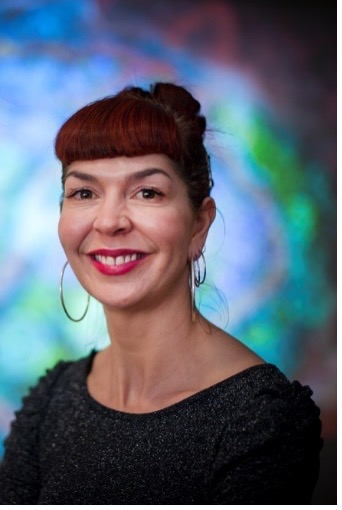
Maja Divjak
Dr Maja Divjak is the inaugural Biomedical Animator at the Peter MacCallum Cancer Centre, where she is creating 3D animations about cellular and molecular mechanisms relevant to cancer and cancer treatment, using scientifically accurate structures. Maja also investigates aesthetic formats for reimagining the animations, to reach a wider audience.
Website: https://vimeo.com/majadivjak
Twitter/X: @maja_divjak
